
WHOM THE GODS WOULD DESTROY, THEY FIRST ADVISE TO CONSULT POPEHAT
by Tara Carreon
January 30, 2017

YOU ARE REQUIRED TO READ THE COPYRIGHT NOTICE AT THIS LINK BEFORE YOU READ THE FOLLOWING WORK, THAT IS AVAILABLE SOLELY FOR PRIVATE STUDY, SCHOLARSHIP OR RESEARCH PURSUANT TO 17 U.S.C. SECTION 107 AND 108. IN THE EVENT THAT THE LIBRARY DETERMINES THAT UNLAWFUL COPYING OF THIS WORK HAS OCCURRED, THE LIBRARY HAS THE RIGHT TO BLOCK THE I.P. ADDRESS AT WHICH THE UNLAWFUL COPYING APPEARED TO HAVE OCCURRED. THANK YOU FOR RESPECTING THE RIGHTS OF COPYRIGHT OWNERS.
“The idea of sending ‘letters’ using [the Compatible Time-Sharing System] was resisted by management, as a waste of resources.”
-- Van Vleck, 2001
YOU ARE REQUIRED TO READ THE COPYRIGHT NOTICE AT THIS LINK BEFORE YOU READ THE FOLLOWING WORK, THAT IS AVAILABLE SOLELY FOR PRIVATE STUDY, SCHOLARSHIP OR RESEARCH PURSUANT TO 17 U.S.C. SECTION 107 AND 108. IN THE EVENT THAT THE LIBRARY DETERMINES THAT UNLAWFUL COPYING OF THIS WORK HAS OCCURRED, THE LIBRARY HAS THE RIGHT TO BLOCK THE I.P. ADDRESS AT WHICH THE UNLAWFUL COPYING APPEARED TO HAVE OCCURRED. THANK YOU FOR RESPECTING THE RIGHTS OF COPYRIGHT OWNERS.
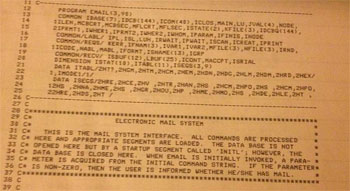
YOU ARE REQUIRED TO READ THE COPYRIGHT NOTICE AT THIS LINK BEFORE YOU READ THE FOLLOWING WORK, THAT IS AVAILABLE SOLELY FOR PRIVATE STUDY, SCHOLARSHIP OR RESEARCH PURSUANT TO 17 U.S.C. SECTION 107 AND 108. IN THE EVENT THAT THE LIBRARY DETERMINES THAT UNLAWFUL COPYING OF THIS WORK HAS OCCURRED, THE LIBRARY HAS THE RIGHT TO BLOCK THE I.P. ADDRESS AT WHICH THE UNLAWFUL COPYING APPEARED TO HAVE OCCURRED. THANK YOU FOR RESPECTING THE RIGHTS OF COPYRIGHT OWNERS.
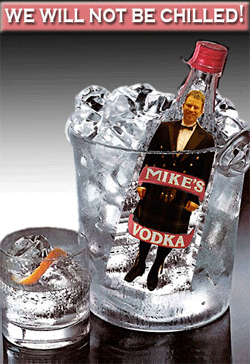
YOU ARE REQUIRED TO READ THE COPYRIGHT NOTICE AT THIS LINK BEFORE YOU READ THE FOLLOWING WORK, THAT IS AVAILABLE SOLELY FOR PRIVATE STUDY, SCHOLARSHIP OR RESEARCH PURSUANT TO 17 U.S.C. SECTION 107 AND 108. IN THE EVENT THAT THE LIBRARY DETERMINES THAT UNLAWFUL COPYING OF THIS WORK HAS OCCURRED, THE LIBRARY HAS THE RIGHT TO BLOCK THE I.P. ADDRESS AT WHICH THE UNLAWFUL COPYING APPEARED TO HAVE OCCURRED. THANK YOU FOR RESPECTING THE RIGHTS OF COPYRIGHT OWNERS.
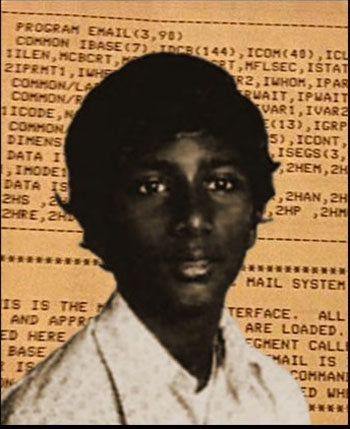
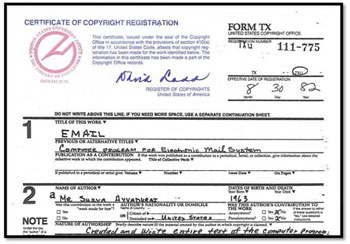
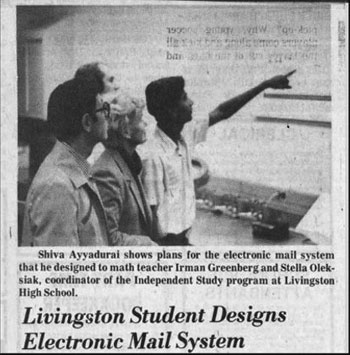
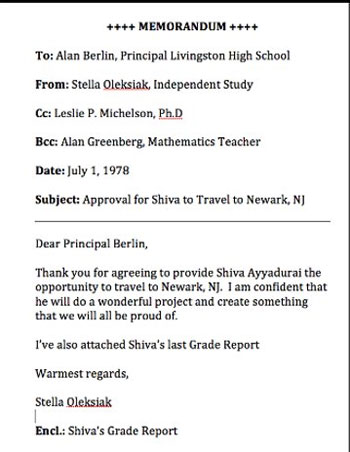
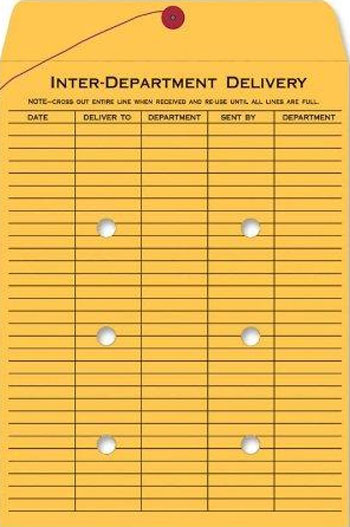
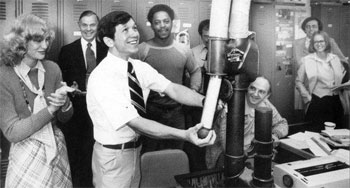
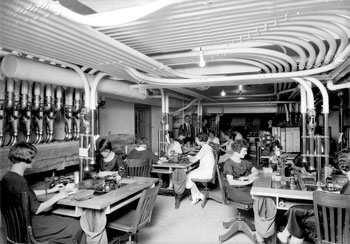


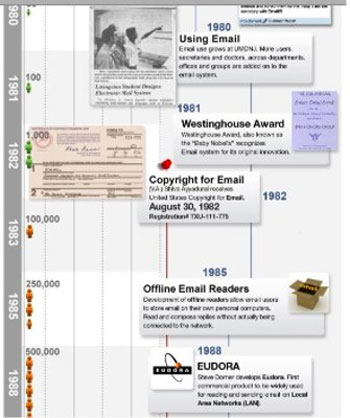
"At this time, no attempt is being made to emulate a full-scale, inter-organizational mail system. The fact that the system is intended for use in various organizational contexts and by users of differing expertise makes it almost impossible to build a system which responds to all users' needs."
— Crocker, David. Framework and Function of the "MS" Personal Message System. Santa Monica, CA: RAND Corporation, December 1977.
Since the system is to be used for communication which is exemplified in older and heavily-exercised technology, it is assumed that users have an extensive conceptual model of the communication domain. It is further assumed that a system which performs in ways which deviate from that model will be viewed as "idiosyncratic" and impeding the efforts of the user. Problems occurring during this sort of interaction can be expected to be as irritating as having a pen which leaks or a typewriter with keys that jam. Therefore, a major design goal for MS is to provide an integrated set of necessary and sufficient functions which conform to the target user's cognitive model of a regular office-memo system. At this stage, no attempt is being made to emulate a full-scale inter-organization mail system....
The level of the MS project effort has also had a major effect upon the system's design. To construct a fully-detailed and monolithic message processing environment requires a much larger effort than has been possible with MS. In addition, the fact that the system is intended for use in various organizational contexts and by users of differing expertise makes it almost impossible to build a system which responds to users' needs. Consequently, important segments of a full message environment have received little or no attention and decisions have been made with the expectation that other Unix capabilities will be used to augment MS. For example, MS has fairly primitive data-base management (i.e., filing and cataloging) facilities and message folders have been implemented in a way which allows them to be modified by programs, such as text editors, which access them directly, rather than through the message system.
-- Framework and Functions of the "MS" Personal Message System: A Report prepared for Defense Advanced Research Projects Agency, by David H. Crocker
“One day, electronic mail, like Edison’s bulb, may also permeate and pervade our lives. It’s practical applications are unlimited. Not only is mail sent electronically, as many telexes and teletypes are capable of doing, but it offers a computational service that automates a secretary’s or file clerk’s work of writing a memorandum, document or letter, editing, filing, and retrieving. If electronic mail systems become a reality, they will surely create different patterns of communication, attitudes, and styles. Volumes of written work, for example, shall become obsolete.”
-- V.A. Shiva Ayyadurai, 1981
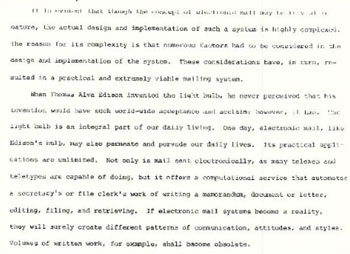

YOU ARE REQUIRED TO READ THE COPYRIGHT NOTICE AT THIS LINK BEFORE YOU READ THE FOLLOWING WORK, THAT IS AVAILABLE SOLELY FOR PRIVATE STUDY, SCHOLARSHIP OR RESEARCH PURSUANT TO 17 U.S.C. SECTION 107 AND 108. IN THE EVENT THAT THE LIBRARY DETERMINES THAT UNLAWFUL COPYING OF THIS WORK HAS OCCURRED, THE LIBRARY HAS THE RIGHT TO BLOCK THE I.P. ADDRESS AT WHICH THE UNLAWFUL COPYING APPEARED TO HAVE OCCURRED. THANK YOU FOR RESPECTING THE RIGHTS OF COPYRIGHT OWNERS.
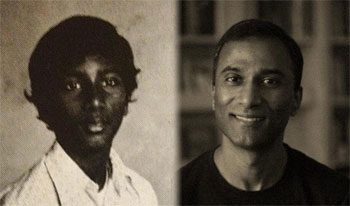
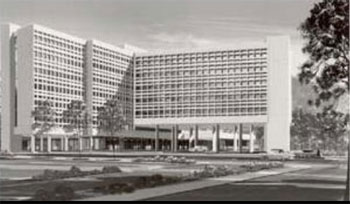
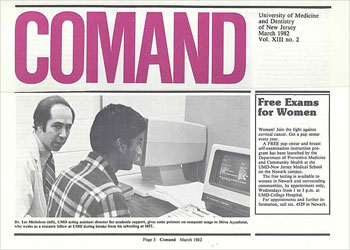
"At this time, no attempt is being made to emulate a full-scale, inter-organizational mail system [p.4]…. The fact that the system is intended for use in various organizational contexts and by users of differing expertise makes it almost impossible to build a system which responds to all users' needs. [p.7]”
— Crocker, David. Framework and Function of the "MS" Personal Message System. Santa Monica, CA: RAND Corporation, December 1977.
Since the system is to be used for communication which is exemplified in older and heavily-exercised technology, it is assumed that users have an extensive conceptual model of the communication domain. It is further assumed that a system which performs in ways which deviate from that model will be viewed as "idiosyncratic" and impeding the efforts of the user. Problems occurring during this sort of interaction can be expected to be as irritating as having a pen which leaks or a typewriter with keys that jam. Therefore, a major design goal for MS is to provide an integrated set of necessary and sufficient functions which conform to the target user's cognitive model of a regular office-memo system. At this stage, no attempt is being made to emulate a full-scale inter-organization mail system....
The level of the MS project effort has also had a major effect upon the system's design. To construct a fully-detailed and monolithic message processing environment requires a much larger effort than has been possible with MS. In addition, the fact that the system is intended for use in various organizational contexts and by users of differing expertise makes it almost impossible to build a system which responds to users' needs. Consequently, important segments of a full message environment have received little or no attention and decisions have been made with the expectation that other Unix capabilities will be used to augment MS. For example, MS has fairly primitive data-base management (i.e., filing and cataloging) facilities and message folders have been implemented in a way which allows them to be modified by programs, such as text editors, which access them directly, rather than through the message system.
-- Framework and Functions of the "MS" Personal Message System: A Report prepared for Defense Advanced Research Projects Agency, by David H. Crocker



YOU ARE REQUIRED TO READ THE COPYRIGHT NOTICE AT THIS LINK BEFORE YOU READ THE FOLLOWING WORK, THAT IS AVAILABLE SOLELY FOR PRIVATE STUDY, SCHOLARSHIP OR RESEARCH PURSUANT TO 17 U.S.C. SECTION 107 AND 108. IN THE EVENT THAT THE LIBRARY DETERMINES THAT UNLAWFUL COPYING OF THIS WORK HAS OCCURRED, THE LIBRARY HAS THE RIGHT TO BLOCK THE I.P. ADDRESS AT WHICH THE UNLAWFUL COPYING APPEARED TO HAVE OCCURRED. THANK YOU FOR RESPECTING THE RIGHTS OF COPYRIGHT OWNERS.

TABLE 1
The Parts and Detailed Description of the Interoffice Mail System at UMDNJ (1978).
INBOX
This was the physical Inbox where a secretary received incoming documents. It was usually made of wood, metal or plastic. The courier or “office boy” or “mailroom clerk” would deliver postal mail or interoffice memos into this Inbox. Deliveries into the Inbox were done at least twice per day. Sometimes, urgent messages were delivered on an ad hoc basis into the Inbox.
OUTBOX
This was a physical box made of metal, wood, or plastic, where outgoing postal mail or interoffice memos, which were composed, edited, an placed in an envelope, and addressed to the recipient, were made available for pickup and delivery to its recipients. A courier or “office boy” or “mailroom clerk” would come and pick up the items from the Outbox regularly, at least twice per day.
DRAFTS
This was a physical box made of metal, wood, or plastic to hold drafts of memos or letters, which were in the midst of being reviewed and edited. Typically, a secretary would write the memo and put in the Drafts box for review. A superior would then pickup, review and provide “red-line” feedback on the memo or letter, and place back into Drafts box. The secretary would retrieve the edited document, make changes, and place the edited document back in the Drafts box. After the superior gave instructions, the memo or document would be deemed as completed; the secretary would then place the memo in an envelope, and place it in the Outbox for pick up.
FOLDERS
Memos, documents and files were archived and organized in metal cabinets containing metal drawers. Within each drawer, one could organize, categorize and these items in manila folders within each drawer.
TYPEWRITER
A Typewriter was an instrument that allowed a person to create a Memo. It consisted of mechanical components corresponding to all the alphabets in the English language plus the 10 digits of the number system, as well as a number of other special characters. The Typewriter required paper and ink ribbon to convert strokes on the keyboard into letters on the paper. There were many styles of Typewriters, mechanical and later electrical.
MEMO
This was typically a piece of 8 1/2 by 11-inch piece of BOND paper. The top of the Memo had the words “++++++ MEMORANDUM ++++++” written on it and centered. Below, there were the following areas: “To:”, “From:”, “Date:”, “Subject:”, “Body:”, “Cc:”, “Bcc:” (only for view in the sender’s original), and another section with “Encl.:”, if Attachment(s) were included. After the “Subject:”, there was typically a horizontal black line, after which the “Body:” of the memo appeared. Below the “Body:” were the names of people on “Cc:” list, and then the “Encl.:” list, listing the various Attachments.
ATTACHMENTS
A memo could have Attachments or enclosures such as another file folder, another document, a drawing or a photograph, or even a parcel.
CARBON COPIES
Carbon copies were copies of a Memo created by the secretary, who would typically place dark blue carbon paper between two Bond pieces of white paper and roll them into the typewriter, to create the copies. The Bond paper on top was the original, the paper below, was the “Carbon Copy” or “Cc:”. Sometimes, several Carbons were used, and sometimes if the “Cc:” list was too long, the original would be mimeographed on a mimeograph machine. Then, the original “To:” recipient would get the original, the top copy, and each person on the CC list would get copies. This got more complicated if there were multiple recipients in the “To:” field, or a Group in the “To:” field.
BLIND CARBON COPIES
Blind Carbon Copies enabled a secretary to send a Carbon Copy of a Memo to some people, that others on the “To:” and “Cc:” lists were purposely made to unaware, or “blind” except to the secretary who authored the Memo. The “Bcc:” list, in the header of the Memo, was kept by the sender/secretary, only, and others who got Carbon copies, those on the “Cc:” list, did not see e.g. they were “blind” to those receiving the Bcc’s. So only the sender knew who was on the Bcc list.
REGISTERED MEMO
In the office environment of the medical school and hospital at UMDNJ, this was a very important feature, because certain Memos had to be acknowledged as received. A Memo could be flagged as a “Registered Memo,” this would mean that it was treated differently. The delivery person would put it in a different color envelope and ensure that recipient signed a Return Receipt, before it was put into the Inbox. This would assure the sender that the recipient got the Memo.
RETURN RECEIPT
This was a formal receipt that a delivery person would make sure got signed by the recipient who had been sent a Registered Memo. This Return Receipt would then have to get sent back to the original sender.
ENVELOPE
The interoffice envelope was typically a bit larger than an 8 1/2 by 11-inch paper, and was normally gray or yellow in color. The envelope had a red string on the outside so it could be secured for ease of opening and reuse. The outside of the envelope provided columns and rows on which the sender and the recipient could be listed. After a recipient received the envelope, they could recycle the envelope by crossing out the previous sender and recipient and using the blank rows to write the new sender and recipient, name and address.
ADDRESS BOOK
Every office had an Address Book, which listed each person’s first and last names, location, Group affiliation (e.g. surgery, finance, pharmacology), room number and phone number. The Address Book was the cornerstone of each offices’ contact list.
GROUPS
A Group was listed next to someone’s name in the Address Book. Individuals could belong to different Groups. Groups included Surgery, Pharmacology, ICU, IT, etc. One nuance was that the Group names may be the same, but the Group was distinct based on the campus location. For example, the Pharmacology Group at one location may have different people, than the Pharmacology Group at another location. Each location had different people in different Groups.
TRASH BUCKET
A Trash Bucket was typically next to a secretary’s desk on the floor. The bucket was made of either plastic or metal, and was the location of where trash, such as old papers, garbage were deposited.
COMPOSING MEMO
Composing a Memo was done by the action of taking a blank piece of white Bond paper and placing it in the Typewriter. Sometimes, if errors were made during time, a white liquid substance in a small bottle jar, colloquially called “whiteout was used to erase mistakes, and then the typing was done over the whited out area.
SENDING MEMO TO INDIVIDUAL
Memo to an individual meant that the “To:” field had only the name of only one recipient.
SCANNING MAIL
Scanning mail was the process of quickly reading the Envelope in the Inbox, opening the Envelope and quickly reading the top portion of a Memo, such as the “From:”, “Subject:”, lines to get a quick idea whether to read the Memo immediately, discard it into the Trash Bucket to read first, to put for later review, or sometimes to discard altogether e.g. junk mail.
FORWARDING (OR REDISTRIBUTION)
A person receiving and reviewing an incoming Memo in the Inbox could Forward or Re-Distribute the Memo to others. Forwarding literally involved adding a list of other recipients who to review the Memo. This Forward list was sometimes just paper-clipped on the received Memo, and as the forwarded recipients read the Memo, they checked off their name on the paper-clipped list, and passed it on to the next recipient, who had not yet read the Memo.
FORWARDING WITH RETURN RECEIPT REQUESTED (OR REGISTERED MEMO)
This was an important feature to ensure receipt of a forwarded Memo by the recipient. Sometimes, an important Memo, say from a Director, would be received by a Manager, and that Manager wanted to ensure that certain employees in his group received the Memo. Forwarding with Return Receipt enabled the Manager to know exactly when and who got the Memo and who did not get the Memo. Prior to someone receiving the Memo in their Inbox, the delivery person, would not place the Envelope containing the Memo, it in their Inbox, until the recipient, signed the Return Receipt. The Return Receipts from each employee was sent back to the Manager, and thereby the Manager could the number of Return Receipts and know how many actually received the Memo.
EDITING
A memo sometimes would be edited after it was composed. Editing could be iterative based on the feedback received. Editing typically involved the use of whiteout or sometimes starting with new blank piece of paper and retyping the original Memo with the corrections. Editing relied on the use of the Drafts box, as this box served as the point of interaction between the secretary and her superior.
REPLYING
Sometimes instead of writing a new Memo, an individual Replied to a Memo received in the Inbox. When they replied to the Memo, they could either simply send the response Memo or attach the response Memo to the original Memo sent from the sender as an Attachment for the originating sender’s reference.
BROADCAST MEMO
Sometimes a Memo would need to be broadcasted, or sent, to multiple recipients, sometimes hundreds, not just one individual. This involved listing multiple names of recipients in the “To:” field. The original Memo was created with the listing of all people’s names on the “To:” field. Then that original Memo was copied using the carbon paper to copy, if the list was small, or the original Memo was simply mimeographed. Then each copy was stuffed in an Envelope and placed in the Outbox.
SENDING MEMO TO GROUP
In a large organization, within and across facilities, there were different departments such as Pharmacology, Finance, Administration, Surgery, etc., and one may want to send a Memo to a department or Group. A Group involved a listing of many recipients. However, in the “To:” field only the name of the Group would appear. The secretary would then have to look up in the Address Book and print mailing labels for each individual in that Group, and send a copy of the Memo to each recipient; alternatively, sometimes only one copy of the Group Memo was sent to on address, and the recipient, the secretary or administrator of the Group, on the other end, would make copies of the Memo, and distribute it to members of the Group.
DELETING
Sometimes a memo would be thrown into the Trash Bucket for disposal.
PURGING
The contents of Trash Bucket, by request, would be collected and be destroyed.
UPDATING ADDRESS BOOK
Address Books were updated as employees came and left the organization. New people were added, and those who had left were removed. Sometimes a circular was sent out which was the update to the existing Address Book, and one would have to manually insert the changes in an existing Address Book.
PRIORITIZATION
When mail was left in the Inbox, it sometimes was sorted based on some priority, and marked, such as High, Medium or Low by the secretary. And some secretaries, had file folders, for sorting these three categories of Memos.
ARCHIVING
Not all Memos were discarded after they were read. Some Memos were to be kept for storage, and were often put into an archive file cabinet and organized for long–term record keeping.
UNDELIVERABLE NOTIFICATION
Sometimes a Memo could not be delivered even after many Retries. In this case, the delivery person would take the Memo back to the sender with a note on it saying “Undeliverable”.
RETRIES
All mail had to be delivered, or a real effort was made to keep trying to deliver it before being deemed Undeliverable. This meant a policy of “retries” as many as 3 to 5 times, before the attempts were stopped. The number of Retries was a policy decision of the organization.
SECURING DELIVERY
All mail had to be securely delivered. This meant that only the designated recipient had to receive it. Typically this was ensured, as the delivery person knew who was who and knew the secretaries. Moreover, Memos were put in an individual sealed envelope, with a string closure or taped, so they could not be easily opened during transit.
TRANSPORTING
All mail needed to be transported. There were many ways of Transporting. The delivery person could physically pick up the mail and deliver from local office to office, on foot. Another forms of transporting were using pneumatic tubes, in which the Envelope was placed. The pneumatic tubes were sent on a system of train-track-like rails, form office to office. Mail among different buildings and campuses was transported by cars or trucks.
SORTING
Different locations had mail Sorting facilities, where the mail would come in, be sorted by groups, departments, locations, zip code, office numbers, so the delivery was easier. Within each office, the secretary would also perform sorting operations by a memo’s priority, source, etc.
TABLE 2
The Parts of Email, the First Email System as Implemented in the Computer Program Invented by V.A. Shiva Ayyadurai at UMDNJ (1978)
Interoffice Mail System Parts in the First Email System
Inbox
All Fields of Interoffice MemoTo:
From:
Subject: (70 chars length)
Date:
Body:
Cc:
Bcc:
Sending Memo to Individual
Saving a Memo as a Draft
Scanning Mail
Forwarding (or Redistribution)
Forwarding with RETURN RECEIPT (or registered memo)
Composing Memo
Drafts
Editing
Outbox
Replying
Broadcast Memo
Sending Memo to Group
Deleting
Purging
Address Book
Updating Address Book
Searching the Address BookBy Group
By User Name (short name)
By Last Name
By Zipnode (node or location)
Prioritization
Archiving
Carbon Copies
Blind Carbon Copies
Groups
Registered Memo
Return Receipt
Undeliverable Notification
Retries
Secure Delivery – Using username and password
AttachmentsAttaching to a memo
Creating Attachments from scratch
Saving attachments
Attachment editor
Transmission of memo
Multi-Level User Access – User, Manager, Postmaster, System Administrator
Sorting
Memo Formatting – Formatting functions to make sure that a memo on the screen when printed looked akin to the typewritten memo.
PrintingPrint all mail
Print selected memos
Print only the “envelopes”, To, From, Subject, Date
Formatted printing --- memo looked like typewritten one
Exporting of MailExport a single memo to a file
Export a set of memos to a file
Group Management --- Postmaster/Administrator LevelCreating Groups
Deleting Groups
Placing User in a Group
Deleting User from a Group
Displaying Groups
Restricting Group Access --- Particular users could send to certain groups. E.g. Only Postmaster could send to “ALL” for global broadcast.
Postmaster & Systems Administrator FunctionsReports on mail usage by user
Deleting aged mail
Shutdown of the entire system
Startup of the entire system
Deleting Users
Adding Users
Adding a “Zipnode”, new network
Deleting a Zipnode
Disabling a User from logging in to the user interface
Direct starting of mail transmission
Integrated System ComponentsEasy-To-Use User Interface
Word-processor
Integrated Attachment Editor
Relational Database Engine
Modular Inter-Process Communication Protocol
Print Manager for Formatted Printing
Systems Administrator Console
Post Master Console
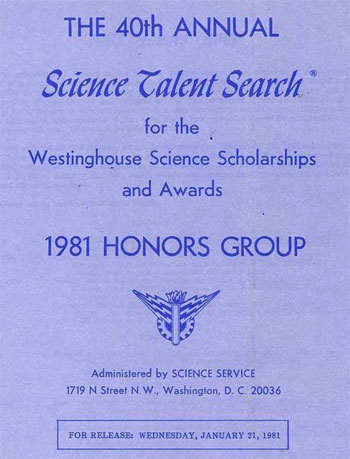

Systems and Software Consortium, Inc. (SSCI) is the new name of the Software Productivity Consortium, SSCI President and CEO Dr. Jim Kane announced today. SSCI is a non-profit consortium where leading aerospace, defense, IT, financial industry, educational and government organizations collaborate on the challenges faced in building critical systems. Coupled with its new identity, the Consortium also launched a new website (http://www.systemsandsoftware.org) to better inform its members, employees and the public about the evolving, dynamic and critical mission of SSCI.
SSCI President and CEO Dr. Jim Kane said, "Our focus is clearly on our members' needs. We have realigned our current offerings and are investing more heavily in new solutions that help members manage risk, advance the business value of their systems engineering activities, and drive business performance."
SSCI solutions are now focused on delivering value in three key areas:
* Value-driven process improvement, where SSCI's unique expertise in systems and software process improvement helps members implement high- maturity, measurable processes to increase quality and productivity
while reducing cycle time.
* Lifecycle strategies for complex systems, including minimizing risk, designing and validating architectures, defining system requirements and interfaces, implementing team approaches, and improving mission assurance.
* Integrating systems and software engineering through proven engineering methods for agile, secure systems development, effective project management, in-depth measurement and analysis, and automated testing and verification.
These solutions reflect an increased emphasis on serving members' needs in complex systems and software development.
Dr. Kane added, "Part of the challenge we face is keeping our members up to date and aware of industry changes and accompanying solutions developed through the Consortium. Our new name and website help us better serve our
members, and convey our core focus more efficiently."
SSCI will continue in its successful collaborative assistance through delivering software process expertise, much like in past contributions with Consortium members in key DoD programs like the DD(X) next generation surface combatant ship and the F-35 Joint Strike Fighter.
About the Systems and Software Consortium, Inc. (SSCI)
SSCI is a nonprofit partnership of the nation's leading systems integrators and federal government contractors, as well as selected government affiliates, exclusively focused on helping its members improve the business performance of their systems and software programs. SSCI delivers value by improving systems and software engineering tools and methods that members can apply to their programs resulting in better performance and greater efficiencies. The Consortium also offers members a trusted environment in which to collaborate on common problems and jointly invest in solution development. Current industry members include, BAE Systems, Boeing, Citigroup, CSC, EDS, General Dynamics, Lockheed Martin, Northrop Grumman, Raytheon, Unisys, UTC, and others. For more information see
http://www.systemsandsoftware.org.
-- Systems and Software Consortium, Inc. (SSCI) is New Name for SPC. Name and Website Reflect Expanding Focus on Member Needs, by Systems and Software Consortium, Inc.
"At this time, no attempt is being made to emulate a full-scale, inter-organizational mail system [p.4]…. The fact that the system is intended for use in various organizational contexts and by users of differing expertise makes it almost impossible to build a system which responds to all users' needs. [p.7]”
— Crocker, David. Framework and Function of the "MS" Personal Message System. Santa Monica, CA: RAND Corporation, December 1977.
Since the system is to be used for communication which is exemplified in older and heavily-exercised technology, it is assumed that users have an extensive conceptual model of the communication domain. It is further assumed that a system which performs in ways which deviate from that model will be viewed as "idiosyncratic" and impeding the efforts of the user. Problems occurring during this sort of interaction can be expected to be as irritating as having a pen which leaks or a typewriter with keys that jam. Therefore, a major design goal for MS is to provide an integrated set of necessary and sufficient functions which conform to the target user's cognitive model of a regular office-memo system. At this stage, no attempt is being made to emulate a full-scale inter-organization mail system....
The level of the MS project effort has also had a major effect upon the system's design. To construct a fully-detailed and monolithic message processing environment requires a much larger effort than has been possible with MS. In addition, the fact that the system is intended for use in various organizational contexts and by users of differing expertise makes it almost impossible to build a system which responds to users' needs. Consequently, important segments of a full message environment have received little or no attention and decisions have been made with the expectation that other Unix capabilities will be used to augment MS. For example, MS has fairly primitive data-base management (i.e., filing and cataloging) facilities and message folders have been implemented in a way which allows them to be modified by programs, such as text editors, which access them directly, rather than through the message system.
-- Framework and Functions of the "MS" Personal Message System: A Report prepared for Defense Advanced Research Projects Agency, by David H. Crocker
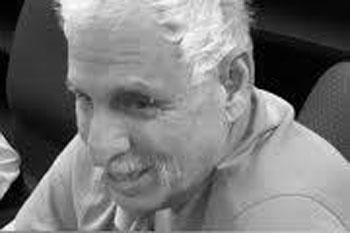
YOU ARE REQUIRED TO READ THE COPYRIGHT NOTICE AT THIS LINK BEFORE YOU READ THE FOLLOWING WORK, THAT IS AVAILABLE SOLELY FOR PRIVATE STUDY, SCHOLARSHIP OR RESEARCH PURSUANT TO 17 U.S.C. SECTION 107 AND 108. IN THE EVENT THAT THE LIBRARY DETERMINES THAT UNLAWFUL COPYING OF THIS WORK HAS OCCURRED, THE LIBRARY HAS THE RIGHT TO BLOCK THE I.P. ADDRESS AT WHICH THE UNLAWFUL COPYING APPEARED TO HAVE OCCURRED. THANK YOU FOR RESPECTING THE RIGHTS OF COPYRIGHT OWNERS.
Myth #1: “Email was created on the ARPANET”
Myth #2: “Ray Tomlinson invented ‘email’ and sent the first ‘email’”
Myth #3: “The ‘@’ symbol equals the invention of ‘email’”
Myth #4: “RFCs demonstrate ‘email’ existed prior to 1978”
Myth #5: “CTSS, developed in 1960s, is ‘email’
“Given the term email was not used prior to 1978, and there was no intention to emulate ‘… a full-scale, inter-organizational mail system,” as late as December 1977 [by the ARPANET], there is no ‘controversy’ here, except the one created by industry insiders, who have a vested interest.”
-- (Wired, Who Invented Email, Just Ask…Noam Chomsky, June 6, 2012)
“A set of different elements so connected or related as to perform a unique function not performable by the elements alone.”
"At this time, no attempt is being made to emulate a full-scale, inter-organizational mail system [p.4]…. The fact that the system is intended for use in various organizational contexts and by users of differing expertise makes it almost impossible to build a system which responds to all users' needs. [p.7]”
— Crocker, David. Framework and Function of the "MS" Personal Message System. Santa Monica, CA: RAND Corporation, December 1977.
Since the system is to be used for communication which is exemplified in older and heavily-exercised technology, it is assumed that users have an extensive conceptual model of the communication domain. It is further assumed that a system which performs in ways which deviate from that model will be viewed as "idiosyncratic" and impeding the efforts of the user. Problems occurring during this sort of interaction can be expected to be as irritating as having a pen which leaks or a typewriter with keys that jam. Therefore, a major design goal for MS is to provide an integrated set of necessary and sufficient functions which conform to the target user's cognitive model of a regular office-memo system. At this stage, no attempt is being made to emulate a full-scale inter-organization mail system....
The level of the MS project effort has also had a major effect upon the system's design. To construct a fully-detailed and monolithic message processing environment requires a much larger effort than has been possible with MS. In addition, the fact that the system is intended for use in various organizational contexts and by users of differing expertise makes it almost impossible to build a system which responds to users' needs. Consequently, important segments of a full message environment have received little or no attention and decisions have been made with the expectation that other Unix capabilities will be used to augment MS. For example, MS has fairly primitive data-base management (i.e., filing and cataloging) facilities and message folders have been implemented in a way which allows them to be modified by programs, such as text editors, which access them directly, rather than through the message system.
-- Framework and Functions of the "MS" Personal Message System: A Report prepared for Defense Advanced Research Projects Agency, by David H. Crocker
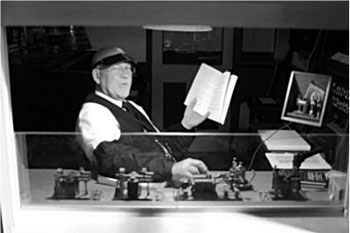
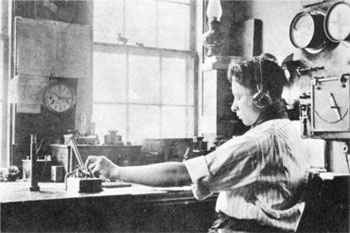

“The very simple systems (SNDMSG, RD, and READMAIL) did not integrate the reading and creation functions, had different user interfaces, and did not provide sufficient functionality for simple message processing.”—Vittal, John. MSG: A Simple Message System. Cambridge, MA: North-Holland Publishing Company, 1981.
“I was making improvements to the local inter-user mail program called SNDMSG. The missing piece was that the experimental CPYNET protocol had no provision for appending to a file; it could just send and receive files. Adding the missing piece was a no-brainer—just a minor addition to the protocol.”—Tomlinson, Ray, retrieved April 7, 2012.
http://openmap.bbn.com/~tomlinso/ray/fi ... frame.html
“Because the ‘@’ was a line kill character in Multics, sending mail from Multics to other hosts used the control argument -at instead.”—Van Vleck, Tom. History of Electronic Mail, http://www.multicians.org/thvv/mail-history.html, April 7, 2012.
“[T]he BBN guys - who always seemed to get to write the histories and hence always seemed to have claimed to have invented everything, anyway, perhaps because BBN was the only "for-profit" to furnish key members of the original Network Working Group.”—Padlipsky, M.A., ARPANET contributor and author of more than 20 RFC specifications), “And they argued all night….”,
http://archive.is/dx2TK
“[E]mail underpinnings were further cemented in 1977's RFC 733, a foundational document of what became the internet itself.”
“This specification is intended strictly as a definition of what is to be passed between hosts on the ARPANET. It is not intended to dictate either features which systems on the Network are expected to support, or user interfaces to message creating or reading programs.”— http://tools.ietf.org/rfc/rfc733.txt
“The proposed uses [of MAIL] were communication from ‘the system’ to users, informing them that files had been backed up, communication to the authors of commands with criticisms, and communication from command authors to the CTSS manual editor.” -http://www.multicians.org/thvv/mail-history.html, retrieved April 18th, 2012
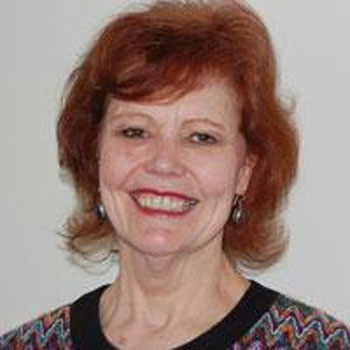
YOU ARE REQUIRED TO READ THE COPYRIGHT NOTICE AT THIS LINK BEFORE YOU READ THE FOLLOWING WORK, THAT IS AVAILABLE SOLELY FOR PRIVATE STUDY, SCHOLARSHIP OR RESEARCH PURSUANT TO 17 U.S.C. SECTION 107 AND 108. IN THE EVENT THAT THE LIBRARY DETERMINES THAT UNLAWFUL COPYING OF THIS WORK HAS OCCURRED, THE LIBRARY HAS THE RIGHT TO BLOCK THE I.P. ADDRESS AT WHICH THE UNLAWFUL COPYING APPEARED TO HAVE OCCURRED. THANK YOU FOR RESPECTING THE RIGHTS OF COPYRIGHT OWNERS.
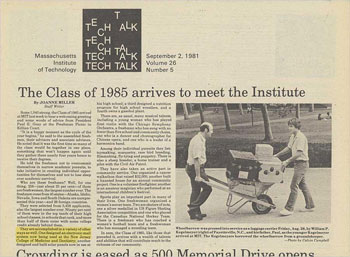
Massachusetts Institute of Technology
TECHTALK
September 2, 1981
Volume 26, Number 5
The Class of 1985 arrives to meet the Institute
by Joanne Miller
Staff Writer
Some 1,040 strong, the Class of 1985 arrived at MIT last week to hear a welcoming greeting and some words of advice from President Paul E. Gray at the Freshman Picnic in Killian Court.
"It is a happy moment as the cycle of the year begins," he said to the assembled freshmen, their advisors and associate advisors. He noted that it was the first time so many of the class would be together in one place, something that won't happen again until they gather there nearly four years hence to receive their degrees.
He told the freshmen not to overcommit themselves in narrow academic pursuits, to take initiative in creating individual opportunities for themselves and not to lose sleep over academic survival.
Who are these freshmen? Well, for one thing, 258 -- just about 25 percent -- of them are freshwomen, the largest number ever. The freshmen come from 45 states -- Alaska, Idaho, Nevada, Iowa and South Dakota are unrepresented this year -- and 26 foreign countries.
They were selected from 5,458 applicants, also the largest number ever. Ninety per cent of them were in the top tenth of their high school classes, in schools that rank, and more than half of them enter with some college credit already behind them.
They are accomplished in a variety of other ways as well. One designed an electronic mail system now being used at the New Jersey College of Medicine and Dentistry; another designed and built solar panels now in use at his high school; a third designed a nutrition program for high school wrestlers, and a fourth owns a gasohol plant.
There are, as usual, many musical talents, including a young woman who has played first violin with the Chicago Symphony Orchestra, a freshman who has sung with no fewer than five school and community choirs, one who is a dancer and choreographer for Chinese opera, and one who is a leader of a harmonica band.
Among their individual pursuits they list: toymaking, marquetry, rare bird breeding, filmmaking, fly-tying and puppetry. There is also a sheep breeder, a horse trainer and a pilot with the Civil Air Patrol.
They have also taken an active part in community service. One organized a cancer walkathon that raised $32,000; another built a haunted house for an annual community project. One is a volunteer firefighter; another is an amateur magician who performed at an international children's festival.
Sports play an important part in many of their lives. One freshwoman organized a women's soccer team. Two are skaters of note, one a silver medallist in US Figure Skating Association competition and one who played for the Canadian National Hockey Team. There is a freshman who has coached a women's football team and a freshwoman who has managed a wrestling team.
In sum, the Class of 1985, like those that preceded it, arrives with a wealth of talents and abilities that will contribute much to the richness of our community.
“That to secure these rights [of life, liberty, and the pursuit of happiness] Governments are instituted among men … that whenever any form of Government becomes destructive of these ends, it is the right of the people to alter or abolish it ….”

Return to A Growing Corpus of Analytical Materials
Users browsing this forum: No registered users and 73 guests